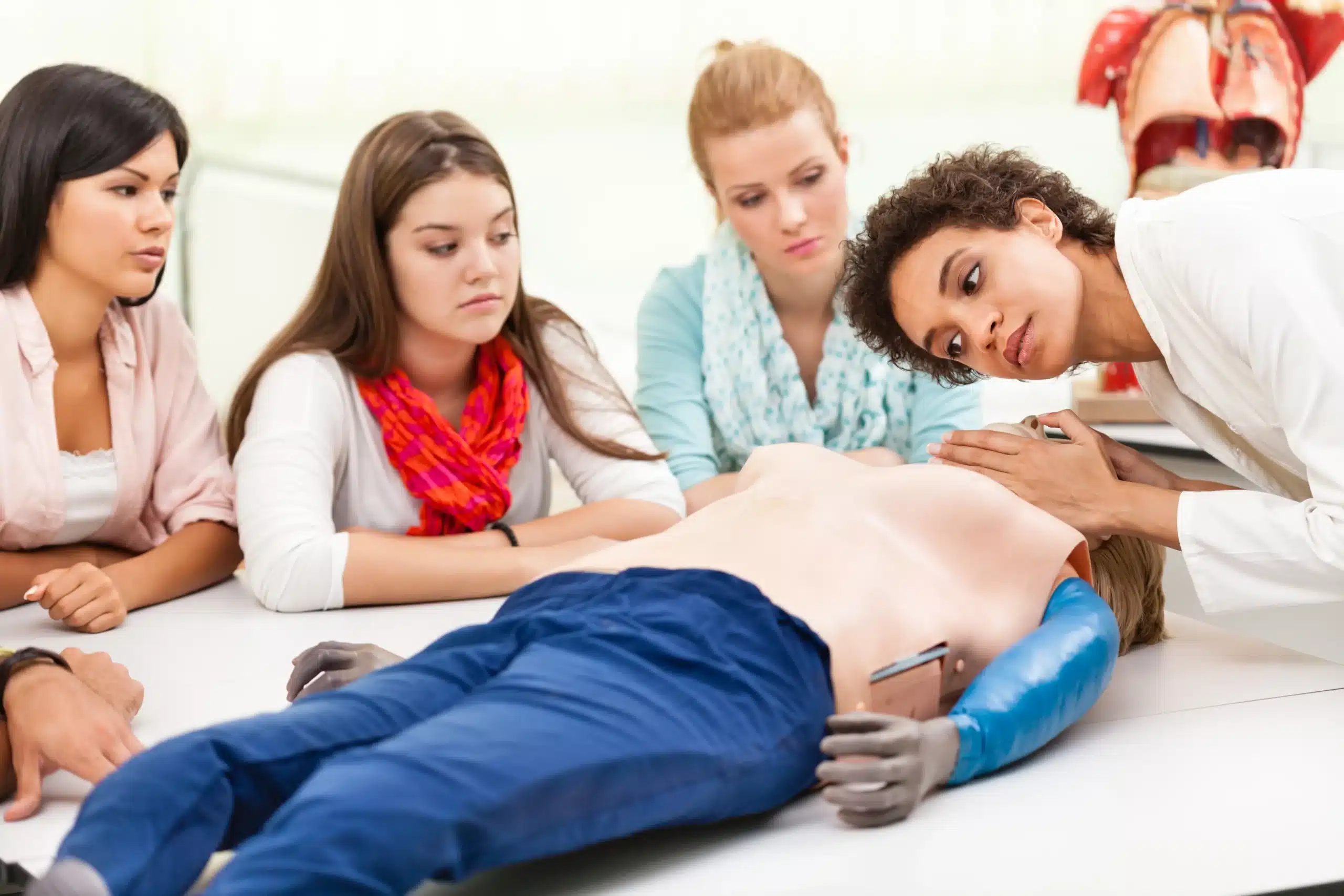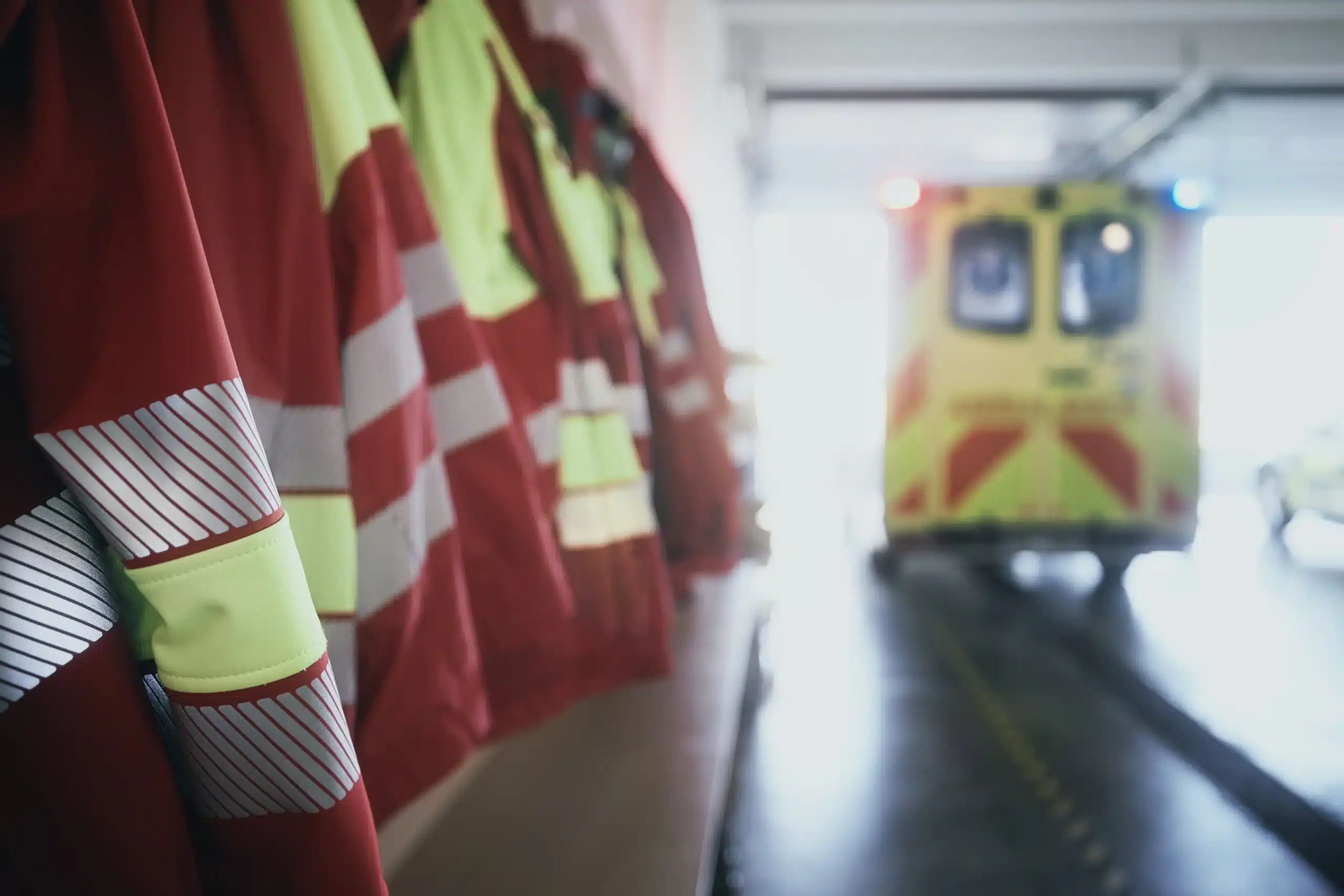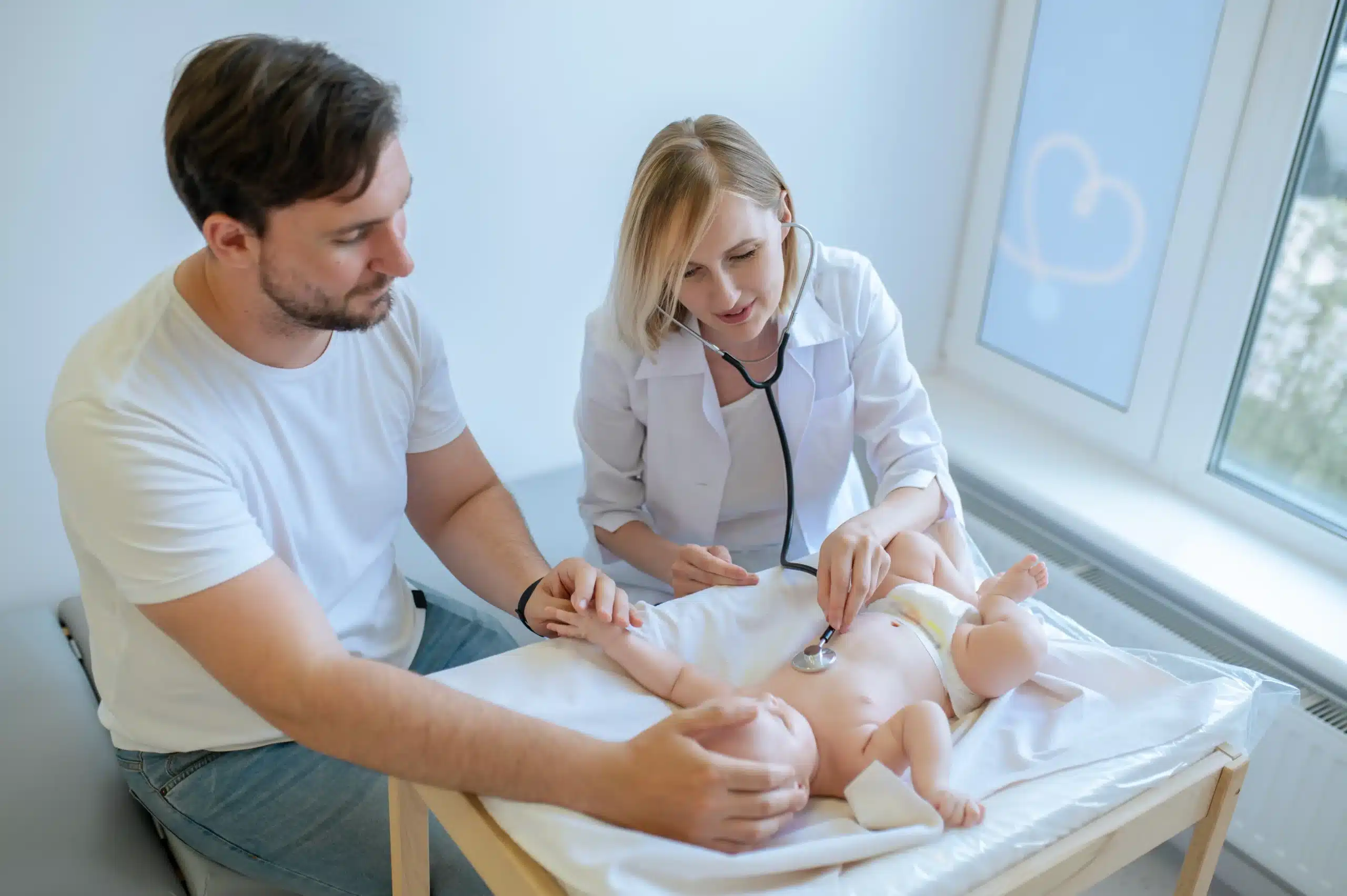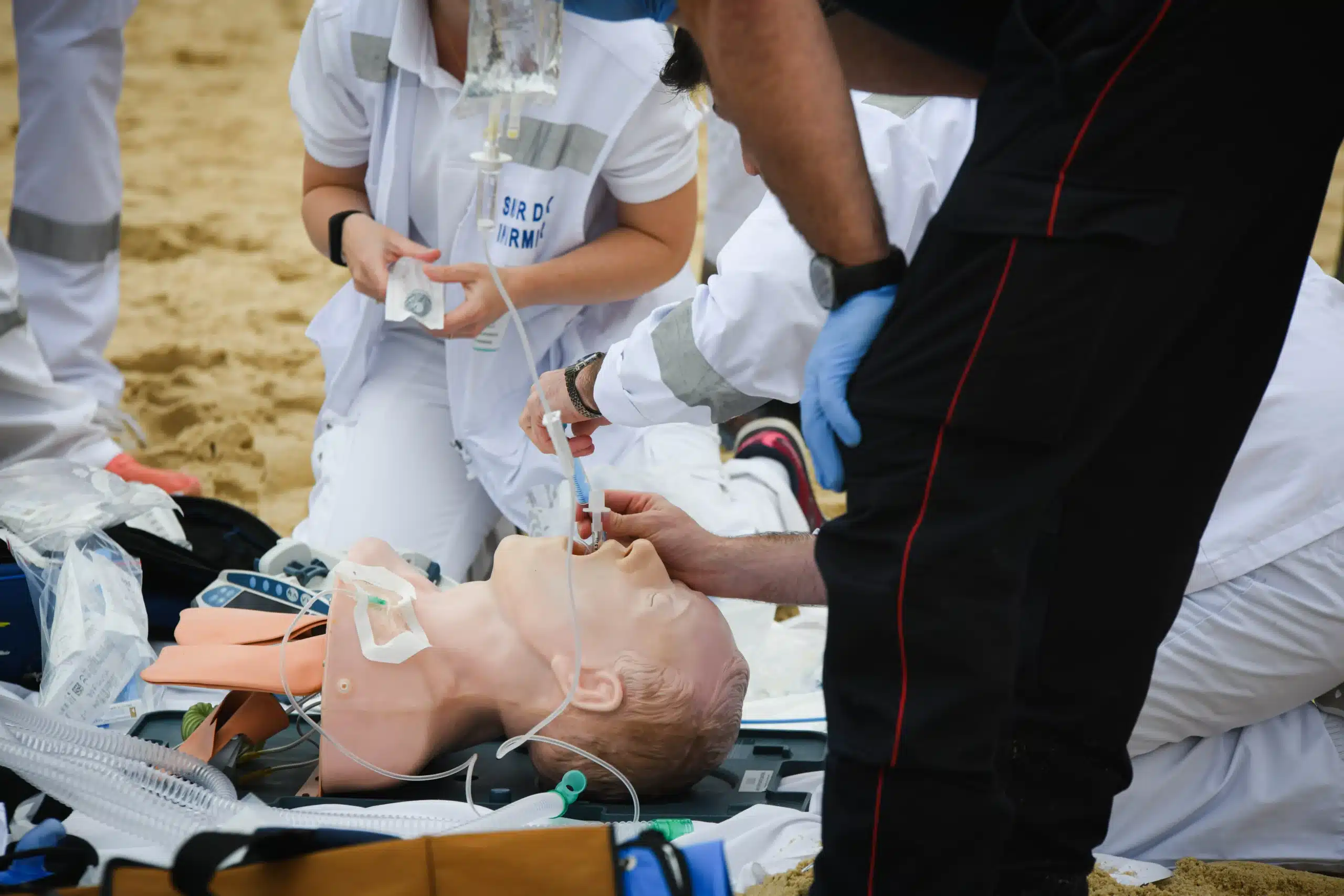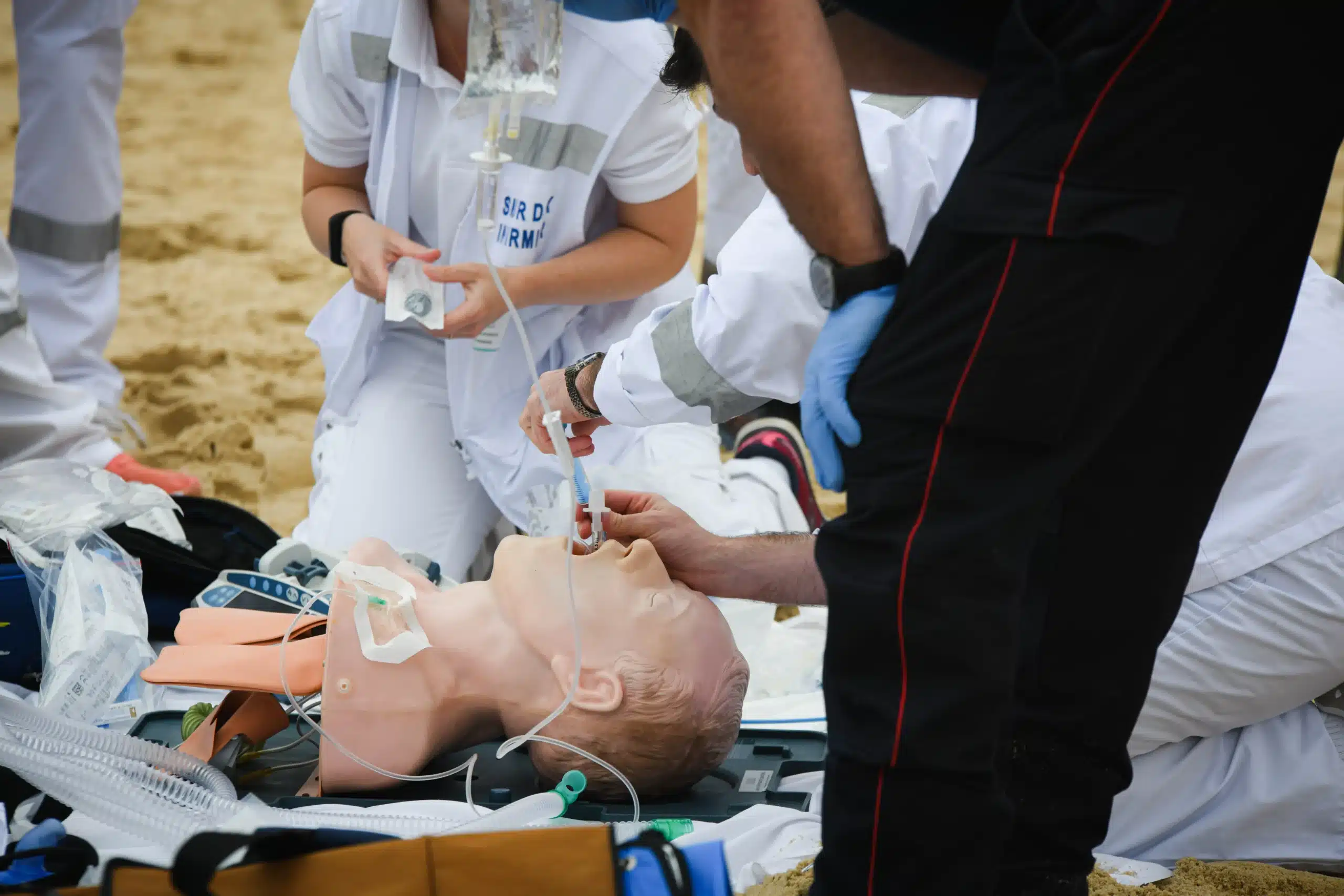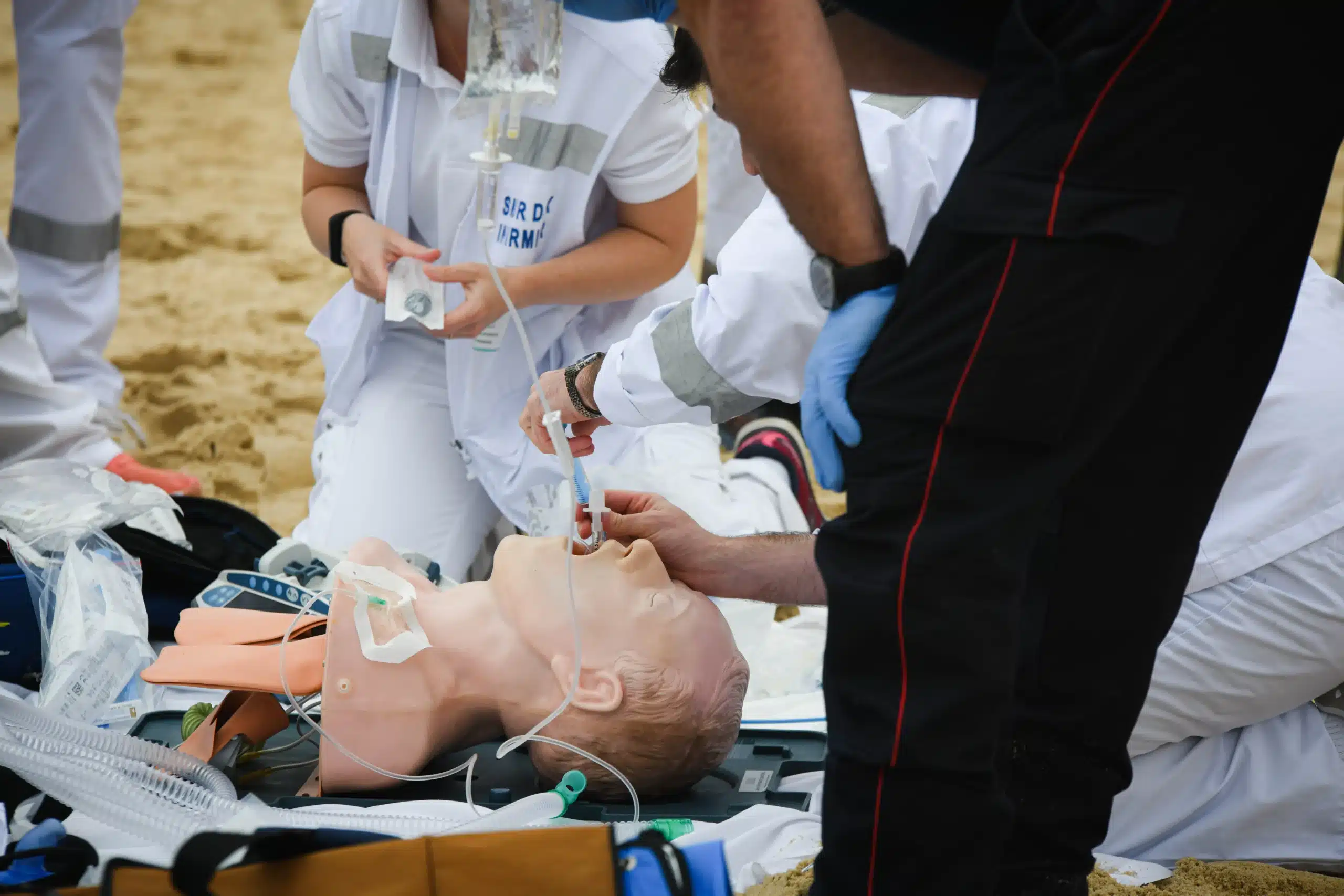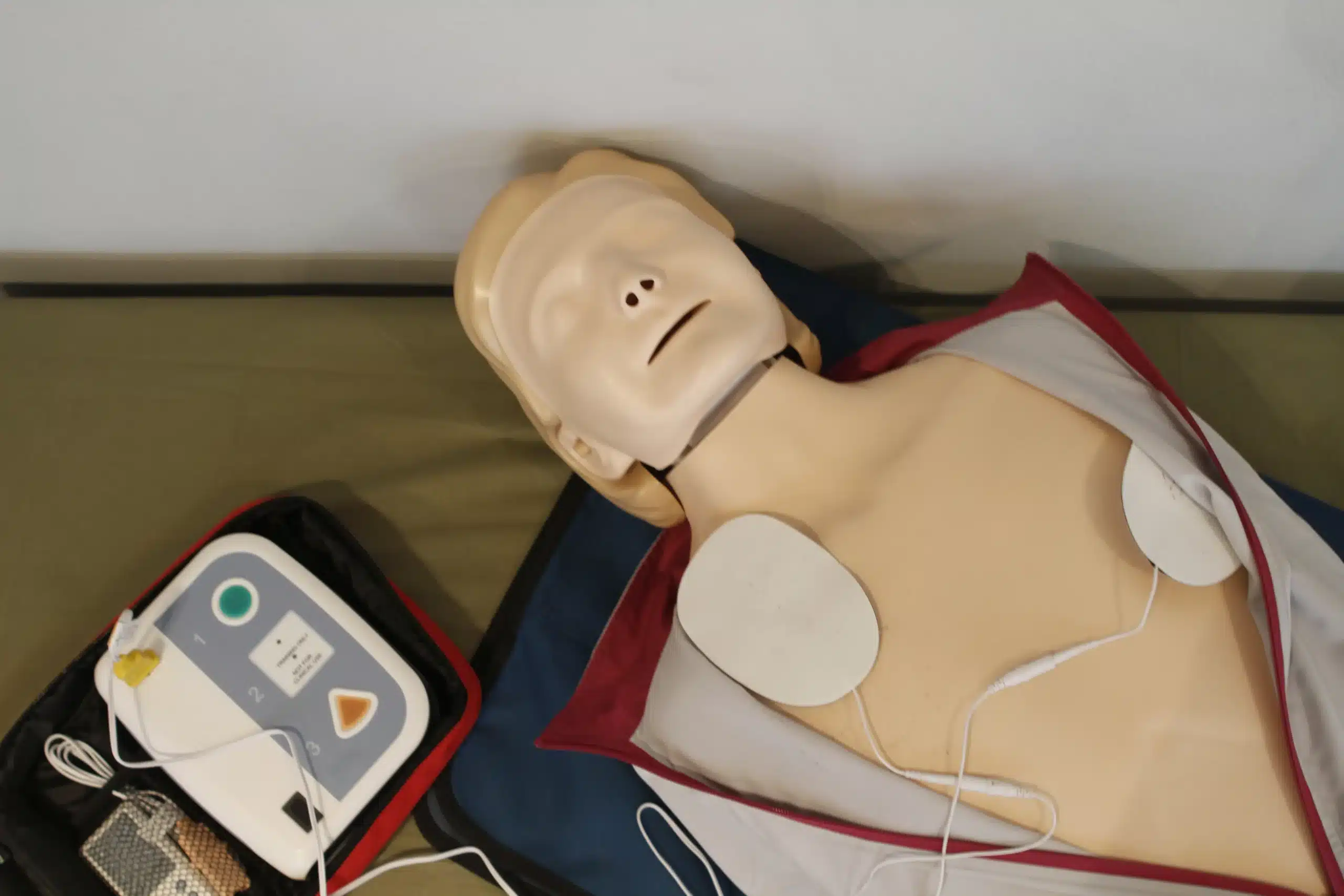In times of crisis, seconds can matter. Basic Life Support (BLS) certification equips you with the skills to provide immediate care during medical emergencies, potentially saving lives. This certification is not just for healthcare professionals; it’s a valuable asset for anyone who wants to be prepared for the unexpected. This guide will walk you through the essentials of BLS certification, including the skills you’ll learn, the various professions that benefit from this training, and how to find “BLS certification near me.” We’ll also cover the different training formats available, the cost of certification, and how to choose the right BLS provider. Empower yourself with the knowledge and confidence to respond effectively in critical situations.
Key Takeaways
- BLS certification provides essential life-saving skills applicable to various emergencies. Whether you’re a healthcare professional or work in another field, BLS training equips you to respond confidently to situations like cardiac arrest and respiratory distress. Choose a course format—online, in-person, or blended—that fits your learning style.
- Finding affordable, high-quality BLS training is easier than you think. Many training centers offer various options, including group discounts and a low-price guarantee. Pleasanton CPR Classes is a great resource for those in the Pleasanton, Dublin, and San Ramon areas.
- Preparation and ongoing practice are key to maximizing the benefits of BLS certification. Utilize pre-course materials, engage actively during training, and stay current with recertification requirements. BLS certification enhances your career prospects and empowers you to make a difference in your community.
What is BLS Certification?
Basic Life Support (BLS) certification equips individuals with the skills to respond to life-threatening emergencies. It’s a crucial credential for healthcare providers and many other professions. BLS focuses on providing immediate care to victims experiencing cardiac arrest, respiratory distress, or an obstructed airway. It involves a comprehensive approach to emergency care, emphasizing teamwork, high-quality CPR, and the use of an AED. For more information, check out this article debunking common myths about BLS certification.
BLS Training Skills
BLS certification courses cover essential lifesaving skills. You’ll learn how to perform high-quality CPR for adults, children, and infants, including chest compressions and rescue breaths. Training also includes using automated external defibrillators (AEDs). Additionally, BLS certification teaches basic airway management techniques, such as relieving choking. The American Heart Association’s BLS course prepares you for various emergency scenarios.
Why Healthcare Professionals and First Responders Need BLS
For healthcare professionals and first responders, BLS certification is often a job requirement. It ensures they can deliver immediate, effective care during critical situations. BLS-certified professionals are better prepared to manage emergencies, potentially saving lives. This article on BLS for healthcare providers highlights its importance in improving patient outcomes. Staying up-to-date with recertification requirements is also essential for anyone working in healthcare.
Who Needs BLS Certification?
BLS certification equips individuals with the skills and knowledge to respond effectively in medical emergencies. It’s a crucial credential for many professions, particularly those in healthcare and emergency response. Let’s explore who benefits most from BLS training.
Healthcare Workers and Medical Students
BLS certification is fundamental for healthcare professionals. Doctors, nurses, physician assistants, paramedics, and other healthcare providers are often the first on the scene during medical crises. BLS training provides these individuals with the skills to manage cardiac arrest, respiratory distress, and airway obstructions. It goes beyond basic CPR, encompassing more advanced techniques and a deeper understanding of life-saving procedures. For medical students, BLS certification is often a prerequisite for clinical rotations and enhances their preparedness for future practice. The American Red Cross offers a helpful comparison of BLS and CPR certification.
Emergency Responders
Emergency responders, such as firefighters, police officers, and EMTs, regularly encounter situations requiring immediate medical intervention. BLS certification is essential for these professionals, enabling them to deliver critical care in the field before transporting patients to a hospital. Their ability to administer BLS can significantly impact patient outcomes and increase the chances of survival. For more information on the importance of BLS, check out this article on common misconceptions about BLS.
Other Professions that Require BLS
The value of BLS certification extends beyond traditional healthcare and emergency response roles. Many other professions benefit from having BLS-trained personnel. These include lifeguards, athletic trainers, physical therapists, and those working in educational settings like teachers and coaches. Even individuals working in corporate environments or industrial settings can benefit from BLS training, empowering them to respond effectively to workplace emergencies. The Red Cross highlights the wide range of professions that utilize BLS certification. Ultimately, BLS training provides valuable skills applicable in various personal and professional contexts.
Find BLS Certification Courses Near You
Finding the right BLS certification course means understanding your options. Whether you prefer online learning or a hands-on classroom experience, there’s a course out there for you. Let’s explore how to find
Online Course Finders
Online BLS courses offer healthcare professionals the flexibility to complete training from anywhere with internet access. This makes it easier to obtain BLS certification around a busy schedule. Online courses often include interactive modules, videos, and simulations to create an engaging learning experience. Many reputable organizations offer online BLS certification, so do some research to find one that fits your learning style and schedule.
Local Training Centers
Hospitals, clinics, and community centers often offer BLS certification courses for staff and the community. These local training centers provide hands-on experience and instructors who can offer personalized feedback. This is especially helpful for those who thrive in a structured classroom environment and value direct interaction. Check with your local hospitals, community colleges, and CPR training centers for upcoming courses.
Pleasanton CPR Classes
Pleasanton CPR Classes offers a variety of BLS certification courses to fit your schedule and learning preferences for those in the Pleasanton, Dublin, or San Ramon areas. We focus on providing high-quality, affordable training with excellent customer service. Our courses cover essential life-saving skills, including CPR, AED use, and how to respond to medical emergencies. We offer a low-price guarantee and are committed to providing the best possible training experience. Contact us today to learn more about our upcoming BLS certification courses and get started.
Choose Your BLS Training Format: In-Person, Online, or Blended?
Getting your BLS certification is easier than ever, thanks to different learning formats. Let’s explore the pros and cons of in-person, online, and blended learning to help you find the best fit.
Pros and Cons of Each Format
In-Person Training: In-person BLS classes, like those offered by the American Red Cross, provide hands-on practice and direct interaction with instructors. This format is ideal for people who learn best in a traditional classroom and value real-time feedback. However, in-person classes require a fixed schedule, which can be tricky if you have a busy life.
Online Training: Online BLS courses offer flexibility, allowing you to learn at your own pace and on your schedule. The online portion often uses interactive modules and adapts to what you already know, potentially shortening the course time. The potential downside is less face-to-face interaction and needing the discipline to complete the coursework independently.
Blended Learning: Blended learning combines online convenience with in-person practice. You’ll complete the online coursework at your own pace and then attend an in-person skills session for hands-on training and evaluation. This offers flexibility while still providing that essential hands-on component.
Select the Right Option
Choosing the right BLS training format depends on your individual needs. Consider your learning style, schedule, budget, and comfort level with technology. If you thrive in a structured environment and prefer hands-on learning, in-person training might be best. If you need flexibility and enjoy self-paced learning, online or blended learning could be a better fit. Think about what helps you learn and retain information most effectively. For example, if you are in Pleasanton, Dublin, or San Ramon, you can find convenient and affordable in-person classes at Pleasanton CPR Classes.
How Much Does BLS Certification Cost?
One of the first questions people ask about BLS certification is, “How much will it cost?” It’s a valid concern, but remember that BLS training is an investment in your skills and can open doors to new opportunities. The good news is that BLS certification is generally affordable, especially when you consider its long-term value.
Average Price Range
BLS certification costs vary depending on your location and the training center you choose. Expect to pay somewhere between $70 and $100 for a basic BLS course. For the best value, check out Pleasanton CPR Classes, which offers a low price guarantee. We also offer group discounts to make training more accessible for organizations.
Factors Affecting Cost
Several factors can influence the overall cost of your BLS certification. For example, some providers include additional materials, like pocket masks or CPR mannequins, in their course fees. Others may charge extra for these items. The course format can also affect the price. In-person classes sometimes cost a bit more due to facility overhead and instructor fees. Blended learning, which combines online modules with in-person skills practice, can offer a balance of convenience and affordability.
Group Discounts and Special Rates
If you’re training a group of employees or colleagues, ask about group discounts. Many training centers, including Pleasanton CPR Classes, offer reduced rates for group bookings. You might also find special rates for students, healthcare professionals, or members of certain organizations. It’s always worth inquiring about potential discounts. This can help make the training more budget-friendly.
Get BLS Certified: The Process
Getting your BLS certification is straightforward and involves a combination of learning and assessment. Here’s what you can expect:
Classroom Instruction and Hands-On Practice
BLS certification courses typically begin with classroom instruction led by a certified instructor. These sessions cover essential life-saving techniques, including CPR, using an AED, and relieving choking. Expect a dynamic learning environment with plenty of opportunities for hands-on practice. You’ll work with training manikins and other equipment to simulate real-life scenarios, building your muscle memory and confidence. The American Red Cross offers in-person BLS training to meet professional and OSHA requirements.
Assessment and Certification
After the classroom instruction and hands-on practice, you’ll move on to an assessment to evaluate your skills and knowledge. This typically involves demonstrating your proficiency in the techniques learned during the course. Upon successful completion, you’ll receive your BLS certification card, which is usually valid for two years. The American Red Cross also provides refresher materials to help you stay sharp between renewals.
Renewal Requirements
To maintain your BLS certification, you’ll need to renew it every two years. Recertification courses are available and often cover any updates to BLS guidelines and best practices. These refresher courses are a great way to stay current with the latest life-saving techniques. The American Red Cross offers recertification courses for those whose certifications are current or recently expired. This ensures you’re always prepared to provide high-quality care in emergencies.
Top BLS Certification Providers
Finding the right BLS certification provider is crucial for a high-quality learning experience. Here are a few reputable organizations and training centers to consider:
Pleasanton CPR Classes
For those in the Pleasanton, Dublin, and San Ramon areas of California, Pleasanton CPR Classes offers comprehensive, AHA-compliant BLS training. They focus on providing excellent customer service and flexible scheduling, with classes available daily. Their commitment to a low price guarantee makes them a budget-friendly option. Check out their CPR and First Aid certification courses as well. For larger groups, they also offer discount options. They also offer RQI classes.
American Heart Association (AHA)
The AHA is a leading authority on cardiovascular health and CPR training. Their BLS course is designed for healthcare professionals and other personnel who need to perform CPR and other basic cardiovascular life support skills. The AHA offers a standardized curriculum and certification recognized nationwide.
American Red Cross
The American Red Cross is another well-respected provider of BLS certification. They offer various learning formats, including online, blended learning (online + in-person skills sessions), and traditional in-person classes. This flexibility allows you to choose the format that best suits your learning style and schedule.
National Safety Council (NSC)
The National Safety Council offers a range of safety training programs, including BLS certification. They emphasize workplace safety and provide training solutions for various industries.
Health & Safety Institute (HSI)
HSI provides comprehensive training programs, including BLS certification, with a focus on enhancing emergency response skills for healthcare professionals. They offer a variety of courses and resources to support ongoing professional development. You can learn more about their BLS certification on their website.
Prepare for Your BLS Certification Course
Getting ready for your BLS certification course can make a real difference in how well you absorb the information and perform those all-important life-saving skills. Here’s how to prepare:
Pre-Course Materials and Study Tips
Many BLS providers offer pre-course materials, so take advantage of them! Pleasanton CPR Classes, for example, may provide study guides or online modules. Reviewing these before class can familiarize you with the core concepts and terminology. Think of it as a warm-up for your brain. Even if your course doesn’t offer specific pre-course work, you can still brush up on basic life support knowledge through resources like the American Red Cross. Their website offers a wealth of information on BLS training and certification.
What to Bring to Class
Knowing what to expect and having the right materials can help you focus on learning. Comfortable clothing is key, as you’ll be practicing skills like CPR and using an AED. Bring a notebook and pen to jot down important reminders or questions. And don’t forget a water bottle to stay hydrated throughout the day. Check with your chosen training center, like Pleasanton CPR Classes, to see if they have any specific requirements or recommendations. For those certifying with Pleasanton CPR classes, check out their low price guarantee.
Make the Most of Your Learning
BLS certification courses often involve hands-on practice and real-life scenarios. Engage actively, ask questions, and don’t hesitate to ask for clarification if something isn’t clear. The more you participate, the more confident you’ll become. Consider your learning style. If you learn best by doing, focus on the practical exercises. If you’re a visual learner, pay close attention to demonstrations. And remember, learning doesn’t stop after you get certified. Regularly reviewing the material and practicing your skills will help you stay sharp and ready to respond in an emergency. You can find refresher materials and resources through organizations like the American Heart Association. Pleasanton CPR Classes also offers RQI classes to help maintain your skills.
Benefits of BLS Certification
Earning your BLS certification offers numerous advantages, from career advancement to personal growth. Let’s explore some key benefits:
Advance Your Career
BLS certification is a valuable asset for healthcare professionals and those in related fields. It’s often a prerequisite for many jobs, as almost all medical facilities require this certification for nurses. A current BLS certification demonstrates your commitment to patient safety and can create new opportunities. Whether you’re a medical student, a seasoned healthcare provider, or just starting your healthcare career, BLS certification provides a competitive edge, showing employers you have essential skills to handle medical emergencies.
Gain Confidence in Emergencies
BLS certification equips you with the knowledge and skills to respond confidently in emergencies. Through a combination of online learning and in-person skills sessions, you’ll gain practical experience in techniques like CPR, using an AED, basic airway management, and assisting someone who is choking. This hands-on training builds confidence and prepares you to react swiftly and effectively in stressful situations. Knowing you can make a difference provides invaluable peace of mind.
Make a Difference in Your Community
BLS-certified individuals play a vital role in their communities. They are prepared to respond to emergencies and provide critical care while waiting for professional help. Getting certified empowers you to potentially save lives and contribute to a safer environment. BLS training addresses common misconceptions about responding to emergencies, encouraging more people to get certified. Whether it’s helping a stranger or a loved one, your BLS skills can have a profound impact.
Related Articles
- BLS Certification in Dublin: A Practical Guide – Pleasanton CPR Classes
- BLS for Healthcare Providers in Dublin: A Complete Guide – Pleasanton CPR Classes
- Basic Life Support (BLS) in Pleasanton: Your Complete Guide
- BLS Classes in Dublin: Your Comprehensive Guide – Pleasanton CPR Classes
- Find BLS Training Near Me: Certification Guide – Pleasanton CPR Classes
Frequently Asked Questions
What’s the difference between BLS and CPR?
CPR (Cardiopulmonary Resuscitation) is a specific lifesaving technique used during cardiac arrest. BLS (Basic Life Support) encompasses CPR but also includes other crucial skills like using an AED, relieving choking, and understanding basic cardiovascular life support principles. Think of BLS as a broader approach to emergency care, with CPR as one of its core components.
How long does it take to get BLS certified?
The time commitment for BLS certification varies depending on the course format and provider. In-person classes typically take a full day, while blended learning (combining online coursework with in-person skills sessions) offers more flexibility. Online-only courses allow you to learn at your own pace, but you’ll still need to demonstrate your skills in person.
How long is BLS certification valid?
BLS certification is typically valid for two years. To maintain your credentials and stay up-to-date with the latest guidelines, you’ll need to complete a recertification course before your current certification expires.
Where can I find BLS classes near me?
Several resources can help you locate BLS classes in your area. The American Heart Association and the American Red Cross have websites with course finders. You can also check with local hospitals, community colleges, and CPR training centers. For those in or near Pleasanton, California, Pleasanton CPR Classes offers convenient and affordable options.
Is online BLS certification accepted?
Yes, online BLS certification is widely accepted, provided it includes a hands-on skills assessment component. Many reputable organizations offer online or blended learning options, allowing you to complete the coursework at your own pace before demonstrating your skills in person. Be sure to choose a program that aligns with your learning style and meets any specific requirements of your workplace or profession.
